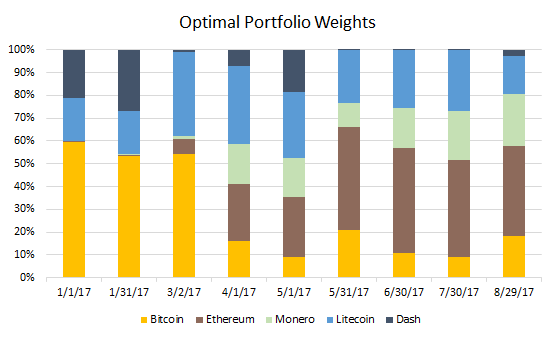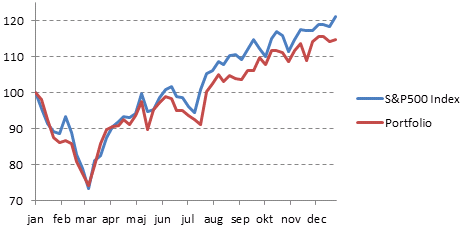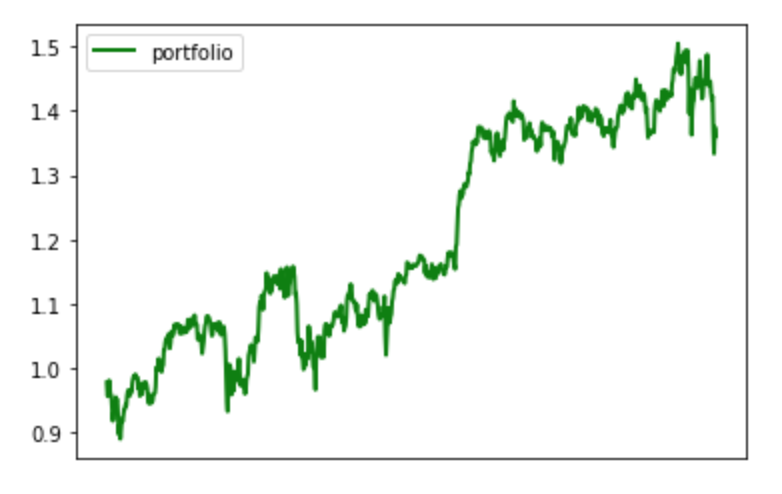Portfolio returns
Introduction to Portfolio Analysis in Python

Charlotte Werger
Data Scientist
What are portfolio weights?
- Weight is the percentage composition of a particular asset in a portfolio
- All weights together have to sum up to 100%
- Weights and diversification (few large investments versus many small investments)

Calculating portfolio weights
$$
- Calculate by dividing the value of a security by total value of the portfolio
- Equal weighted portfolio, or market cap weighted portfolio
- Weights determine your investment strategy, and can be set to optimize risk and expected return

Portfolio returns
Changes in value over time
$ Return_t = \frac{V_t - V_{t-1}}{V_{t-1}} $

Portfolio returns
$$
- $ Return_t = \frac{V_t - V_{t-1}}{V_{t-1}} $
- Historic average returns often used to calculate expected return
- Warning for confusion: average return, cumulative return, active return, and annualized return
Calculating returns from pricing data
df.head(2)
AAPL AMZN TSLA
date
2018-03-25 13.88 114.74 92.48
2018-03-26 13.35 109.95 89.79
# Calculate returns over each day
returns = df.pct_change()
returns.head(2)
AAPL AMZN TSLA
date
2018-03-25 NaN NaN NaN
2018-03-26 -0.013772 0.030838 0.075705
Calculating returns from pricing data
weights = np.array([0, 0.50, 0.25])
# Calculate average return for each stock
meanDailyReturns = returns.mean()
# Calculate portfolio return
portReturn = np.sum(meanDailyReturns*weights)
print (portReturn)
0.05752375881537723
Calculating cumulative returns
# Calculate daily portfolio returns
returns['Portfolio']= returns.dot(weights)
# Let's see what it looks like
returns.head(3)
AAPL AMZN TSLA Portfolio
date
2018-03-23 -0.020974 -0.026739 -0.029068 -0.025880
2018-03-26 -0.013772 0.030838 0.075705 0.030902
Calculating cumulative returns
# Compound the percentage returns over time
daily_cum_ret=(1+returns).cumprod()
# Plot your cumulative return
daily_cum_ret.Portfolio.plot()
Cumulative return plot

Let's practice!
Introduction to Portfolio Analysis in Python

